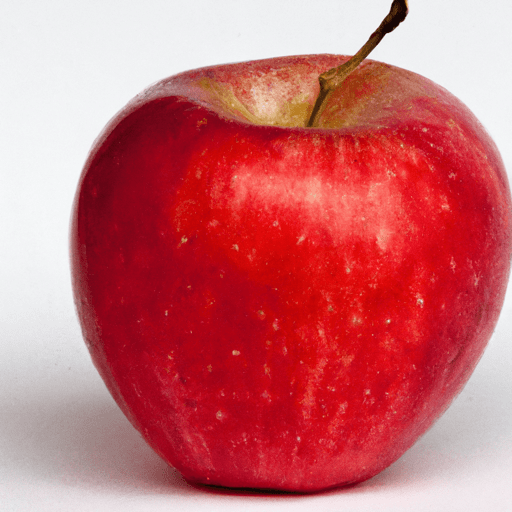The Wonderful World of Apples: A Versatile Fruit for Every Kitchen
Apples, with their crisp texture and sweet-tart flavor, have been delighting taste buds for centuries. While often enjoyed fresh as a snack, apples have also become a staple ingredient in countless dishes. Join me as we dive into the world of apples, exploring their taste, common uses in cooking, nutritional value, and intriguing facts.
Taste
Apples possess a harmonious balance of sweetness and acidity, making them a versatile ingredient in both sweet and savory recipes. The flavor profile can vary greatly depending on the apple variety – from the honeyed undertones of Golden Delicious to the vibrant tang of Granny Smith. Each variety contributes a unique taste, adding complexity to dishes.
Common Uses in Cooking
The culinary possibilities of apples are truly endless. In sweet preparations, they add natural sweetness and moisture to pies, tarts, cakes, and muffins. The comforting aroma of baked apples with cinnamon can instantly elevate any dessert. For a healthier option, thinly sliced or grated apples make a refreshing addition to salads or a delightful topping for yogurt and cereal.
Apples also shine in savory dishes. They effortlessly complement roasted meats, lending a touch of sweetness. Sautéed apples tossed with onions and herbs make a delightful accompaniment to pork or poultry. Apples can also be transformed into chutneys, sauces, or reductions, perfect for enhancing the flavors of various dishes.
Nutritional Value
Not only are apples delicious, but they are also packed with essential nutrients. These beautiful fruits are a great source of dietary fiber, helping to promote a healthy digestive system. Additionally, apples provide vitamin C, an antioxidant that boosts the immune system. They also contain potassium, which is essential for maintaining proper heart function.
Moreover, apples are low in calories and fat, making them a guilt-free snack. Their natural sugars provide a satisfying energy boost without the dreaded sugar crash. So, why not swap that afternoon candy bar for a crunchy apple?
Interesting History and Facts
Apples have an intriguing history that stretches back thousands of years. They have been cultivated across ancient civilizations, from the fertile lands of Mesopotamia to the Chinese empire. Apples were often associated with myths and legends, earning their place in folklore.
Did you know that there are over 7,500 apple varieties grown worldwide? Out of these, around 2,500 are cultivated in the United States alone. Each variety has its own unique characteristics, ensuring there is an apple to suit every preference.
Another fascinating fact is that apples can float in water because 25% of their volume is air. This buoyancy makes them perfect candidates for apple bobbing games during Halloween festivities.
Conclusion
Apples are truly a marvel in the culinary world. With their delightful taste, endless versatility, and impressive nutritional benefits, it’s no wonder they have remained a beloved fruit for centuries. Whether enjoyed fresh, baked into desserts, or added to savory dishes, apples elevate the flavors and textures of any recipe. So, next time you take a bite of that juicy apple, remember to savor not only its taste but also the rich legacy and culinary possibilities it holds.
Apples
Origin: Apples are believed to have originated in Central Asia, in the region stretching from the Caspian Sea to the Altai Mountains. They have been cultivated for thousands of years, with the oldest known apple tree dating back over 200 years.
Common Uses: Apples are incredibly versatile and can be enjoyed in a variety of ways. They are commonly eaten fresh, used in baking (such as in pies, tarts, and cakes), and can be pressed to produce apple juice or cider. Apples can also be cooked down into sauces, jams, and preserves.
Nutritional Benefits: Apples are a good source of several important nutrients. They are high in dietary fiber, particularly in the skin, which aids in digestion and promotes a feeling of fullness. Apples also contain vitamin C, vitamin A, potassium, and antioxidants called flavonoids, which have been linked to various health benefits.
Unique Properties: Apples come in a wide range of colors, flavors, and textures. There are over 7,500 known apple cultivars, with each variety having its own unique characteristics. Some apples are sweet and crisp, while others are tart and soft. The skin of apples can also vary in color, ranging from red, green, yellow, to even striped or speckled patterns.
Historical Significance: Apples have played a role in various cultures and folklore throughout history. In Greek mythology, apples were associated with love and marriage. The story of Adam and Eve in the Bible’s Book of Genesis involves the tempting apple from the Tree of Knowledge. Isaac Newton’s discovery of gravity is said to have been inspired by an apple falling from a tree, although this story might be more legend than fact.




Use the share button below if you liked it.
It makes me smile, when I see it.